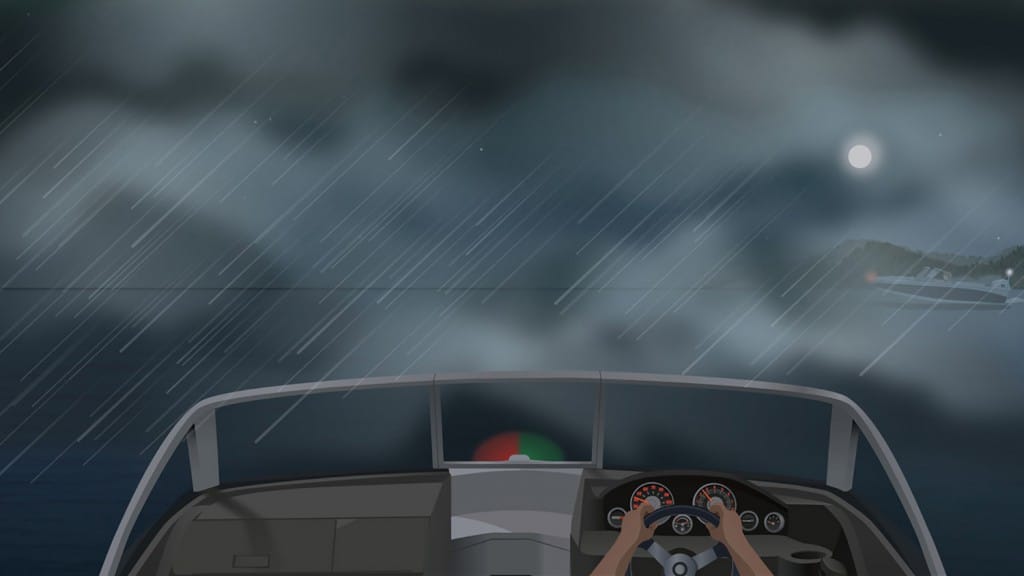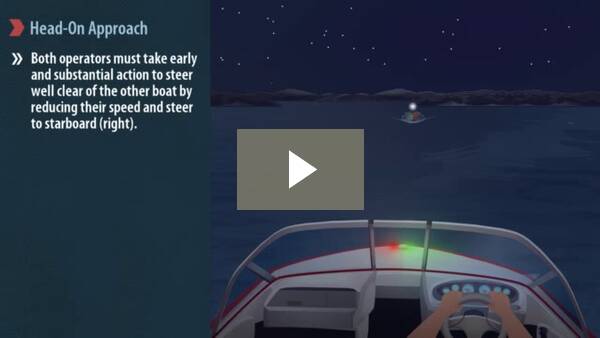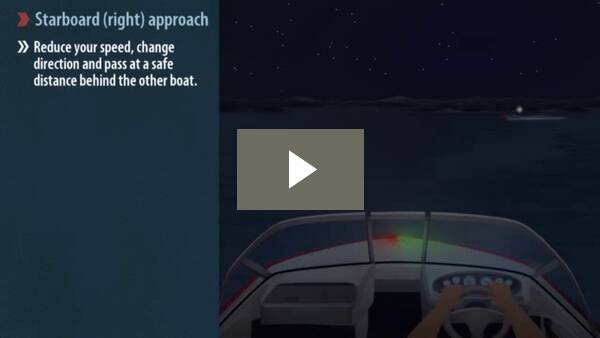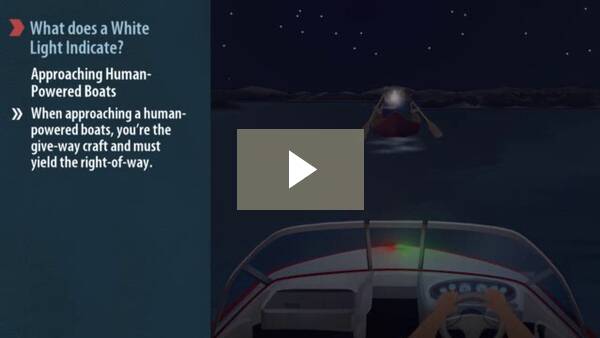Boat Navigation in Restricted Visibility
Boat navigation at night, or during periods of reduced visibility can be dangerous. Boaters should take additional care when operating at night or during periods of restricted visibility, such as darkness, fog or heavy rain.
If you hear a sound signal during restricted visibility, you should reduce your speed in order to proceed safely. Make sure you keep the engine ready for immediate action in case another boat or hazard comes through the fog or darkness and puts your boat at immediate risk of collision.
Boat Navigation at Night
Right-of-way and navigation rules are the same whether you’re operating during the day or at night. However, while operating at night or during restricted visibility, you must determine the speed, position and size of other boats according to the navigation lights they exhibit.
Navigation lights must be used on any pleasure craft that operates from sunset to sunrise or during periods of restricted visibility.
The navigation lights you are required to display depend on the following:
- The size of your boat.
- Whether your boat is power-driven, human-powered or sail-powered.
- Whether your boat is underway or at anchor.
Head-on Approach
If you meet another boat and see a green, red and white light, you’re approaching another power-driven boat head-on. In this situation, neither boat has the right-of-way. Both operators must take early and substantial action to steer well clear of the other boat by reducing their speed and steer to starboard (right).
If you meet another boat and see a green and red light but no masthead (white) light, then you’re approaching a sail-powered boat. In this situation, you are the give-way craft and must yield the right-of-way to the sailboat.
Port (Left) Approach
If a green and white light is visible, then another boat is approaching you from your boat’s port (left) side. In this situation, you are the stand-on craft and should maintain your speed and direction. The other boat should take early and substantial action to steer well clear of your boat.
Starboard (Right) Approach
If a red and white light is visible, then another boat is approaching you from your boat’s starboard (right) side. In this situation, you are the give-way craft and must yield the right-of-way. You should take early and substantial action to steer well clear of the other boat. Reduce your speed, change direction and pass at a safe distance behind the other boat.
Safe Boating Tip:
A simple way to make sense of powerboat navigation lights is to remember the following rule of thumb:
A green light = GO (because another boat is approaching you from your port side).
A red light = STOP (because another boat is approaching from your starboard side).
What Else Does a White Light Indicate?
If you see a white light on its own, it identifies one of the following three situations, indicating that you DO NOT have the right-of-way:
- You’re approaching another boat from behind.
- You’re approaching a boat that’s at anchor.
- You’re approaching a human-powered boat.
Approaching Human-Powered Boats
When approaching a human-powered boats, you’re the give-way craft and must yield the right-of-way. You should take early and substantial action to stay well clear and pass at a safe speed and distance.
Remember that if you’re operating a human-powered boat at night, you’re required to have a working, electric torch, flashlight or lighted lantern showing a white light (this rule applies if the boat cannot be equipped with standard navigation lights.).









